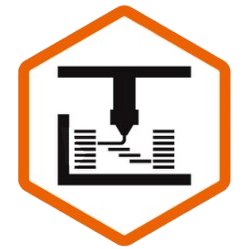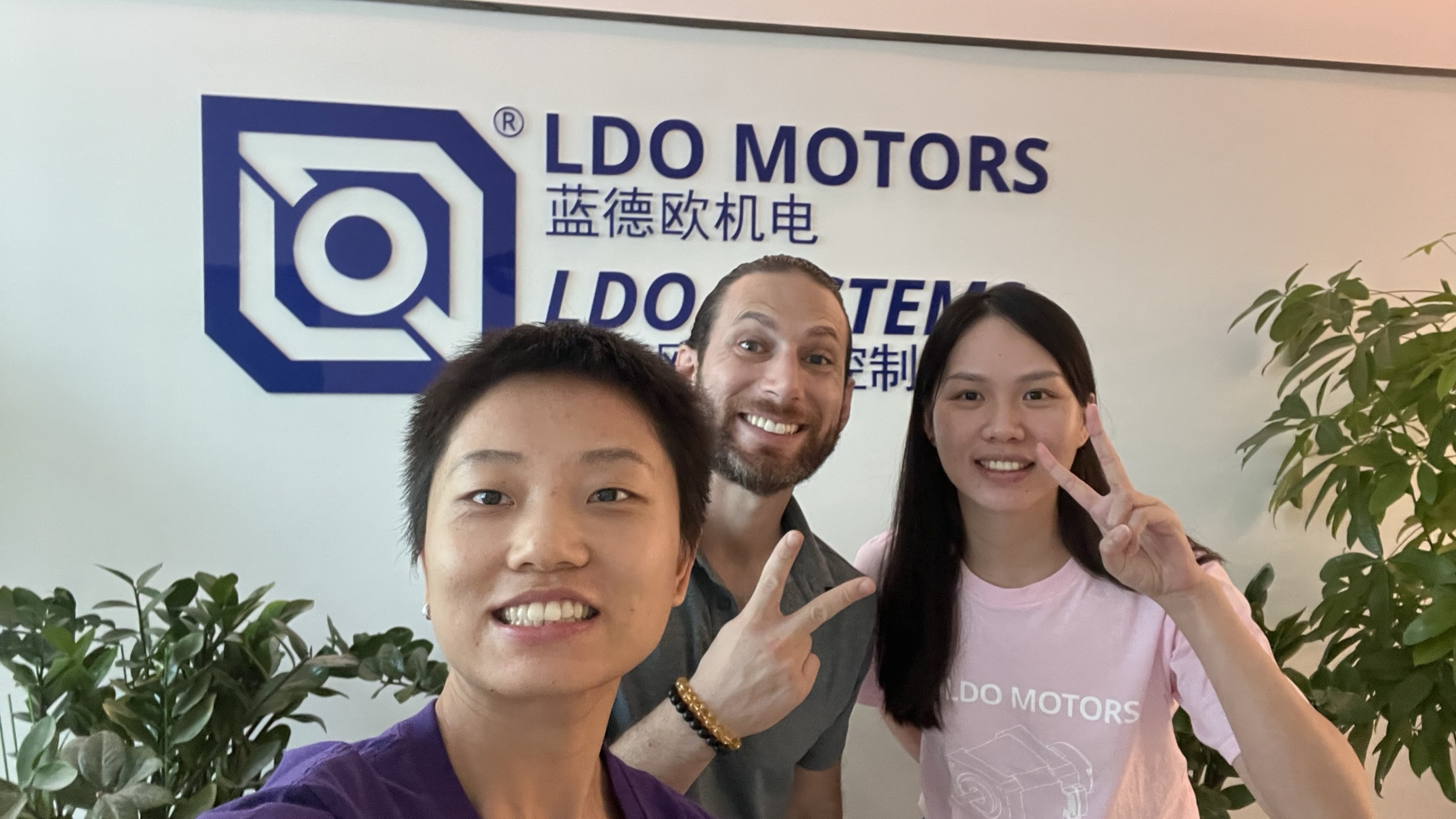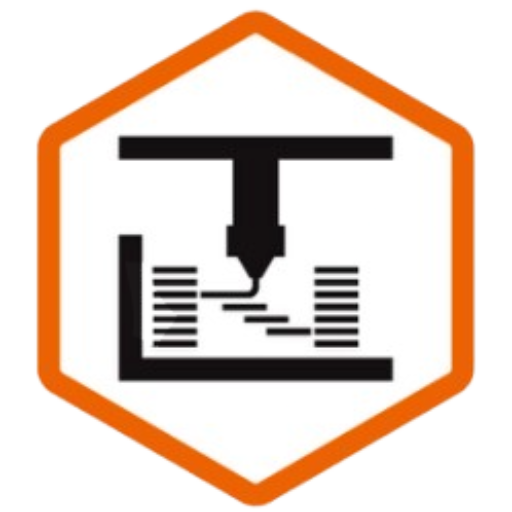THIS is the new Creality K1C.
Creality touts it as the K1 for people who want to print carbon-filled filaments.
But I think there’s something else going on. That this printer is something else entirely.
Personally, I think that this printer is Creality’s “do-over.”
And in this review, we’re going to see how they did.
Let’s get after it!
Background
Just under a year ago, to much fanfare, Creality released the K1, a printer which, in many ways, was their answer to the Bambu Lab lineup. Beyond being their first foray into CoreXY, it represented a dramatic increase in performance, speed, aesthetics, and user-friendliness.
Or at least, it was supposed to.
In reality, as you might recall from my review and many others like it, although the K1 was built on solid foundations, the printer – at least the early model that reviewers received – was riddled with problems that made it pretty much unusable for some.
But since then, based on feedback from members of the community, it does appear that Creality been working hard to address many of those issues, at least in the K1C. In fact, as you’re going to see, they have used a pretty aggressive approach of completely redoing or replacing a lot of the parts that were causing issues in the earlier K1.
So, let’s dive in, and explore the first and probably biggest problem that people encountered with the K1:
Extruder Woes
More than anything else, the Creality K1 launch should stand out in your mind for extruder issues.
Early reviewers, like Nathan Builds Robots, actually went so far as to replace the extruders on their review models.
Later reviewers, such as myself, were actually sent two extruders in the box, in case one of them was plagued by the all-too-common underextrusion issues. The internet was flooded with talk about how to fix the issues, from moving cable chains, to tightening screws,and eventually, Creality made some material and design changes to the extruder itself.
As I mentioned, I don’t have a new K1 to compare this to, so I won’t be commenting on whether or not they fixed it in that printer.
When it came to the K1C, then, Creality KNEW that they needed to get this right, not just because of the damage that fiasco did to their last launch, but also because because this printer is marketed as being able to print Carbon Fiber filaments, which are already somewhat prone to nozzle clogs.
You really don’t want your print to fail due to underextrusion when you’re printing a $100 roll of carbon fiber nylon.
That’s why, as you’ll note on the sales page, the FIRST feature Creality emphasizes about the K1C is that it ships with a more robust, all-metal extruder, with a hardened-steel, quick-swappable nozzle, which, together, they claim can deliver over 1,000 hours of clog-free printing.
That’s a bit of an odd statement to make, though, because… uh… why would more hours mean you’re going to get a clog? If it’s all-metal, and improved… why not just say it’s guaranteed not to clog…? Seems odd to me… but, I digress.
So, what’s the verdict? Well, from my testing thus far, the K1C has absolutely none of the underextrusion issues I had with the K1.
Whether printing PLA, PETG, PAHT-CF, PLA-CF, or even TPU, I have had nothing but a perfect printing experience so far.
In fact, I think this printer produced the single MOST beautiful TPU print I’ve ever seen.
Bed Leveling & Adhesion
Another one of the issues that faced the K1 was bed leveling – and adhesion due to improper bed meshing. It just did not seem to be able to consistently produce perfect first layers.
This was one of the key features that differentiated the K1 from the K1 Max, as the latter benefitted from LiDar bed meshing.
Now, I’m not actually sure what caused these issues on the original K1, but I suspect that it was something as simple as oozing from the nozzle causing the readings to be off as the nozzle tapped the bed, because I was surprised to see that while the K1C still doesn’t come standard with the LiDar sensor of the K1 Max, its build plate DID arrive with a little silicone brush at the back, which, by the way, is eerily similar to the one on the Bambu Lab A1 series.
This is a great idea, and I have said before that I’d like to see more printer manufacturers add a nozzle brush like this… however, I don’t exactly love the way that Creality did it.
Instead of putting the brush onto the print bed platform itself, which I assume would’ve required them to create some new molds or brackets or something, they just glued it onto the print bed itself.
That, in turn, means that the bed is only single sided – in this case, smooth PEI. In my opinion, that’s a huge missed opportunity to add a double-sided bed, with texture on the other side. It’s also, in my opinion, a big giveaway that the whole “Carbon” thing is at least in large part just marketing hype.
If this printer were really geared towards printing carbon filaments like CF Nylon or PETG-CF, it would come with another print surface besides just smooth PEI, which, as it says right on there, is ideally suited for PLA, and likely to get torn up by PETG.
Plus, if you’re printing carbon fiber filaments, with their unique, textured finishes… you probably want the underside to have texturing, too.
And since this printer doesn’t have LiDar, there’s really no good reason why it doesn’t at least include an extra, textured build plate… I don’t want to spend too much time here, because I do have a history of talking for 20 straight minutes about build plates – but the addition of a silicone brush to the build plate makes it much more difficult to find aftermarket build plates for the K1C, at a time where there has been an explosion of exciting new print surfaces to try.
I guess you could probably find some silicone brushes and glue them on yourself, but any double-sided build plate is going to be a waste of money, since it won’t sit flat once you glue the brush on.
Creality, if you’re reading – If you’re not going to offer two print surfaces, at least give us the option to add a textured build plate at checkout without needing to buy a whole weird package deal!
With all that said, I do have to give it to Creality; this smooth PEI sheet sticks beautifully to every material I threw at it, including Carbon Fiber Nylon, without ANY glue stick… and the silicone brush seems to solve the bed leveling issue, because my first layers were perfect every single time. And I guess, if you ARE going to ship it with just one print surface, this is the one to have.
But now, let’s switch over to my second biggest gripe with the previous model:
Firmware & Slicing Experience
The second biggest complaint I and many other reviewers had about the K1 was the firmware, slicer, and mobile app.
To put it gently – they were bad.
Both the slicer and the web interface had extremely limited feature sets that couldn’t take full advantage of the printer or it’s potential. What’s more, though some early reviewers were able to “jailbreak” the firmware and unlock the full version of Klipper underneath, Creality was actively patching exploits early on to stop users from doing this. And the smartphone app… don’t get me started on the smartphone app.
That’s why, when I was given the opportunity in September to actually sit down with Creality’s software engineering team, I basically begged and pleaded with them to take a different approach. Instead of trying to out-Bambu Bambu Lab with proprietary and user-friendly software, why not do something Bambu Lab will never do; give users FULL control over a FULLY open source firmware and let them do whatever they want?
After all, if you’re going to use open source firmware like Klipper, you DO need to at least publish your changes as open source.
The team at Creality seemed amicable, and I was delighted to see that a few weeks later, Creality published their source code.
Fast forward to today, and the entire K1 series now ships with the ability to gain root access – right from the touch screen.
Instead of locking things down, Creality has made the decision to allow users – with ample warning, of course – to open things up. In fact, they’re even shipping these printers with rooted firmware, meaning that you don’t even need to flash the device to unlock it’s full potential.
You can simply install an open source installer helper created by a community member onto the main branch of the firmware, which will then allow you to install Fluidd, Mainsail, OctoEverywhere, your own Macros, Klipper’s timelapse utility… You can, for example, link it to your smartphone app of choice… Slice with any slicer you choose, or even control the printer within OrcaSlicer… whatever you want, really.
And get this: even if you do choose to customize things and ditch the Creality web interface, Creality has fixed the firmware so that you won’t have to sacrifice the beautiful interface on the touch screen display; it still works as normal. As does their own, simplified web interface. And even the smartphone app.
So basically, you’re getting the best of both worlds: full, open-source Klipper and the ability to use your favorite slicer on one port, Creality’s own interface on another, plus, the extra convenience and functionality of Creality’s touch screen design and cloud app.
This, in my book, actually puts the K1C ahead of some other printers that ship with just Klipper and KlipperScreen. After all, most printers that ship with Klipper will require you to upgrade to a paid, third-party service like OctoEverywhere or Obico to get remote access or print failure detection.
I’ll even concede that it seems like Creality has continued to improve their web interface, firmware, slicer… and even the smartphone app. The latter still feels a bit like AliExpress, with a lot of noise and a not-so-premium design, but they now at least give you the option to disable the annoying popups and notifications without sacrificing printer-related ones.
Still, I’m probably not going to be using the Creality App, Slicer, or simplified web interface.
Don’t get me wrong… I understand and appreciate the fact that Creality, like basically every 3D printer manufacturer, wants to attract new demographics by making their printers user-friendly. So I’m glad that they’re continuing to improve those elements of the experience.
But for more advanced users like you and I, being able to get under the open-source hood and change whatever we want – even if it’s just using a third-party smartphone app – is a huge boon.
It is, in my opinion, low hanging fruit for any company looking to differentiate themselves from Bambu Lab, and Creality has done that masterfully with this latest firmware, giving us the best of both worlds. Bravo!
Camera
When Creality first shipped the K1, it did not come with a camera or AI failure detection; that was reserved for the K1 Max. Unfortunately for Creality, as soon as they released the K1, Bambu Lab countered by starting to include the Camera and Auxiliary fan with the P1P. Touché.
So, as you can imagine, the K1C, with it’s $60 higher price tag, DOES include a camera for remote monitoring and timelapses… and, unlike everything in Bambu Labs’ lineup but the flagship X1 Carbon, THIS one apparently DOES have AI failure detection… except, it’s in beta. Also, despite my best efforts, I couldn’t actually get it to work. Which is a bummer, because if it DID work, that would be a major selling point, and a big competitive advantage over the P1S.
Also, the camera doesn’t work as seamlessly as possible in third party apps. I can’t get my new favorite “remote management app,” to recognize it… and it doesn’t show up in the Klipper Timelapse plugin, which I installed through the command line helper utility.
Apparently, according to that utility, my K1C has the latest version of the Camera, which is not compatible. So… while I’m sure there can and will be a fix for both of these, right now, I haven’t been able to get either working in order to test them. Though, I will say that this is another instance where it’s really cool to have BOTH open source Klipper AND Creality cloud running simultaneously, because it turns out that at least the Creality Cloud version of timelapses is working smoothly.
Still, I’d like to be able to both use my own remote viewing app that I use for all my printers, as well as the built-in Klipper timelapse utility, so I do really hope someone is able to fix this soon.
Hot End Woes
Even after I managed to fix the extruder issues and roll my K1 back to open source hardware, the main reason it ended up collecting dust actually an issue with the hot end thermistor, and prints failing in the middle due to invalid readings.
Apparently, this was a common issue, because when I reached out to my rep, she knew all about it, assured me that they were now shipping a fixed hot-end, and offered to ship me a new one the next time they had a package coming to me.
Due to the war in Israel breaking out, that didn’t happen, but I AM pleased to report that I’ve seen no such issues with the hot-end on the K1C.
What’s more, though many people reported issues with the K1 hot-end cover melting when printing high-temp materials, I have been able to print things like PAHT-CF without any issues so far… and they actually printed as easily as PLA, if you can believe it.
So, while this printer might be Creality’s do-over, there definitely is SOME justification to the claim that it’s also much more suited to printing carbon composites.
BUT, and this is a BIG But, I to give the disclaimer that reviewers like myself are always walking a fine line between thoroughly testing a machine and still getting the review out before the printer is old news.
I wish I could test this thing for a few MONTHs before I gave you the thumbs up on issues like hot-end longevity, but by then, who knows, Creality might have already moved on to their next product launch.
So when I say that everything has been working really well for me, keep in mind that I have only put about 30 to 40 hours on this machine so far, which is absolutely nothing, and only a fraction of that was with high-temp materials.
Not to worry, though… I’m going to keep testing and pushing this machine, and I always make sure to post YT shorts or Community posts if I ever change my conclusion or opinion of a printer after further testing, so if you want to be alerted of things like that, make sure you’re not only subscribed to the YouTube channel, but also, that you click the bell icon to get alerted when I post.
Speaking of community posts, when I asked my subscribers what your biggest questions and concerns about this printer were, one thing came up time and time again:
Vertical Fine Artifacts
On the original K1, Creality chose to use rather small pulleys on the stepper motors, which resulted in a big problem with vertical fine artifacts. Fortunately, you’ll notice that Creality has swapped these out for much larger ones, and as noted by Lost In Tech, this seems to have resolved the problem. From my testing, that is definitely the case, so let’s not waste any more time on it.
Instead, let’s skip right over to the…
Loosey-Goosey Door
Recently, I got a chance to interview Uncle Jessy – and one of the things we joked about is that he’ll never live down the time he shattered the K1’s glass door while unboxing it.
Yes, Uncle Jessy does seem to have terrible luck with new 3D printers, but all jokes aside, this happened because of a small design flaw in the K1: the door hinge was extremely loosey goosey, and would allow the door to swing open and potentially break.
Some users also felt that the door didn’t close firmly enough. Personally, I don’t remember that being an issue, and I don’t have my K1 anymore to test… but I am happy to report that the door on the K1C feels great.
It not only has a magnet to hold it shut, it’s also attached to the hinges with a lot of friction, so it can can be fixed at any angle you want, kind of like a laptop screen.
This will be great for if you want to moderate the amount of air flow, without risking drafts and warping… though you do also have the ability to remove the top or turn on the carbon-filtered chamber fan for that same purpose.
On top of all that, Creality went way overboard, by adding anti-shatter film to the glass.
Let’s be honest, this feature was added to protect you from UncleJessying your door if you ever have to tilt the printer for maintenance, but it’s a great addition, and goes a long way into giving the printer a more premium feel.
Warped Bed
Another common complaint about the K1 was that many people apparently received warped beds.
I looked into this quickly with a straight edge, as well as the Klipper bed mesh and was able to determine that the bed is quite flat. Nuff said.
But what about:
Spool Placement
Another thing that many people – myself included – dislike in a 3d Printer is when the only option for mounting a spool of filament is on the back.
Even if you don’t have a dozen printers on industrial shelves like I do, most of us want to push the printer up against a wall, and needing to move it to change the spool is a pain.
Creality hasn’t “fixed” that, per se, but they do ship the K1C with a pre-sliced GCode file for a side-mount spool holder, which I appreciate.
But now, let’s talk about:
Nozzle Swapping & Proprietary Nozzles
At this point, we’re really getting into the nitpicky stuff , but one other thing that people are coming to expect is a quick-swappable nozzle.
With things like the E3D Revo on the aftermarket side, and the Prusa Nextruder or Bambu Lab A1 quick-swap nozzles on the OEM side, it’s becoming common – possibly even expected – that a nozzle be quick and easy to swap without tools.
For the K1C, Creality is introducing a new nozzle type, the tri-metal “Unicorn” system, similar to the Prusa Nextruder nozzles, which is cold-swappable, due to the new design.
Some folks will welcome this ability to quickly swap the nozzle without needing to swap the entire hot-end like you would on a Bambu Lab printer… but personally, as someone who already has a LOT of printers, a LOT of nozzles, and some very high-quality nozzles I like to use, I don’t welcome the addition of yet another standard to the already long list of nozzles and hot-ends I need to keep on hand.
I understand that this was done for better performance, better wear resistance, and easier use, but I do find it a little annoying. Perhaps, like Prusa has done with the Nextruder, Creality will release an adapter kit, so that I can use, say, my diamond nozzles on the K1C if I want to.
Till then, I’m stuck with this 0.4 nozzle it shipped with, unless I want to order some more of these proprietary ones.
So, those are, as far as I can recall, all of the issues that the K1 had… and which, for the most part, the K1C does not. But now, let’s look at the big picture.
My Final Verdict
In my honest opinion, the Creality K1C is the printer Creality should have shipped almost a year ago.
At the end of the day it is still a Creality K1 at it’s core, but with a dozen or so “fixes” that make the printer perform properly in pretty much ALL the ways the K1 didn’t.
Though these are mostly very small changes individually, together, they cumulate into a much better overall experience with the printer.
And, because this is Creality, the king of releasing so many models, with such confusing names, you literally don’t even know which one is which (I’m looking at you, Ender 3 V3 SE), instead of fixing the K1, they just created a new version of it.
So, what’s my verdict? Do I actually like this thing? And will I be using it, shelving it, or getting rid of it?
Well, like I said before, as with all reviews, the requirements of getting this review out before the printer itself is old news means that I still need time before I am confident it’s a keeper, after all, I’ve had printers perform very well during a couple of weeks of review, only to crap out on me or become an overall nightmare a few months later.
But right now, as it stands, I am really impressed with the Creality K1. If I had to describe it in one word, it would be “phenomenal.” And I can’t believe I’m going to say this, but I might even recommend it over my current “best” printer recommendation for hobbyists, the Bambu Lab P1S.
Hoooold on, though… Don’t get me wrong: if you care about multicolor printing, need the extra build volume, or just don’t want to mess around with the firmware and software upgrades to unlock the full capability of the printer… you’ll still be better off with the Bambu Lab.
But if this printer proves as reliable as I think it will, quite honestly, it has a number of advantages over the P1S.
Whether it’s the open source firmware that gives you full control over the printer, the hardened extruder gears and nozzles that are generally reserved for much more expensive printers, the built-in AI failure detection – when they get it working, or the beautiful touch-screen interface… there is a LOT to love on this printer… and by the way, did I mention that it’s a full $140 LESS than the Bambu Lab P1S?
The performance is, as far as I can tell, right on par with the best printers out there… but again, even if it’s not quite up to snuff, the fact that you can unlock a full, unrestrained version of Klipper means that you can do your own tweaking to things like Z-offset, input shaping, and more, to get everything perfectly dialed in.
So, yeah. That’s the new Creality K1C. It’s actually really good.
And while I’m definitely not going to be getting rid of any of my Bambu Lab machines, with their multicolor capabilities, easy-to-load AMSes, and larger build volumes, this printer is easily going to become one of the “go to” machines that I turn to when I need a high quality part printed out quickly and without hassles.
So if you’re in the market for an enclosed, fast printer at a GREAT price, I would definitely recommend skipping right over the K1 and picking this up instead.








